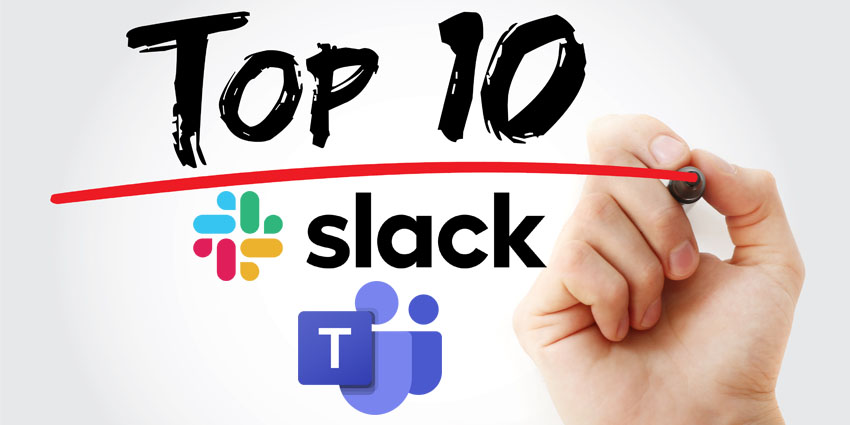Shifting from Microsoft Teams to Slack as your organisation’s UC and collaboration platform is a momentous move.
While both platforms offer robust features, Slack can offer a more flexible, integration-rich ecosystem that many IT leaders and admins find appealing. However, a successful migration necessitates more than just flipping a switch—it demands a structured approach to minimise disruption and facilitate user adoption.
In this guide, we will explore the key benefits and challenges of making the switch and outline 10 critical steps to encourage a seamless transition.
- Disney Says Let It Go To Slack, Will Go The Distance With Microsoft Teams
- How to Delete Messages on Slack: Easy Options
Benefits and Challenges of Migrating from Teams to Slack
Benefits
- Enhanced Integration Flexibility – Slack’s open API and app directory pave the way for deeper integrations with a vast range of third-party tools, offering admins and IT leaders more customisation than Teams’ Microsoft-centric ecosystem.
- Streamlined User Experience – Slack’s intuitive, chat-centric interface and simplified navigation might lead to improved productivity and user satisfaction.
- Cross-Organisation Collaboration – Slack Connect can allow for more seamless external collaboration with partners and vendors, a feature that is sometimes more restrictive in Teams.
- Optimised for Asynchronous Work – Slack’s workflow automation, reminders, and threaded messaging make it a strong fit for hybrid and remote workforces.
Challenges
- Loss of Native Microsoft Integrations – Businesses reliant on deep Microsoft 365 integrations (e.g., SharePoint, OneDrive, Outlook) may need to completely reconfigure workflows or adopt alternative tools.
- User Adaptation and Training – Employees familiar with Teams may initially resist change, requiring thorough training and extensive onboarding efforts.
- Migration Complexity – Moving chat histories, files, and integrations between platforms is not natively supported and can require third-party tools or manual efforts.
- Cost Considerations – While Slack affords different pricing models, some organisations may experience increased costs compared to Teams, which is bundled with Microsoft 365.
Top 10 Things to Know When Migrating from Teams to Slack
1. Define Clear Migration Objectives
Before kicking off the migration, it’s vital to establish clear goals. Are you switching for better integration, improved UX, or cost efficiency? Defining success metrics helps ensure migration is definitely the right move, track ROI, and align with business priorities.
2. Audit Existing Workflows and Integrations
Assess your current Teams environment: What apps, workflows, and integrations are essential? Identify Slack alternatives or migration strategies to prevent workflow disruptions. Leaders and admins should consider using Slack’s Workflow Builder for automation needs.
3. Plan Your Data Migration Strategy
Slack doesn’t natively import chat history from other platforms. Decide whether you need to preserve old conversations and files. Using a secure third-party tool like CloudFuze to extract, convert, and import essential data might be advisable.
4. Establish Governance and Security Protocols
Leaders and admins should ensure compliance with organisational security policies by configuring Slack’s Enterprise Grid (for large organisations). Set up admin controls, data retention policies, and permissions to maintain data integrity and security.
5. Structure Your Slack Workspace Efficiently
Slack’s workspace and channel structure differ from Teams’ team-based layout. Leaders and admins should prioritise designing a logical workspace hierarchy by mapping existing Teams structures into Slack channels, ensuring teams understand where to collaborate.
6. Prepare and Train Your Workforce
A change management strategy is crucial for adoption. Provide hands-on training, Slack cheat sheets, and interactive onboarding to ease the transition. Slack’s built-in tutorials and help resources can support self-paced learning.
7. Optimise Notification Settings
It’s key to note that Teams and Slack handle notifications differently. Train users on Slack’s notification management (e.g., Do Not Disturb, keyword alerts) to prevent notification overload and improve productivity.
8. Leverage Slack Connect for External Collaboration
If you work with external vendors, it’s absolutely critical to migrate shared Teams channels to Slack Connect to maintain seamless comms. Leaders and admins should ensure stakeholders are onboarded and aware of best practices for external collaboration.
9. Automate Workflows and Bots for Efficiency
IT leaders and admins can recreate Teams bots and automation in Slack using Slack Workflow Builder or integrations like Zapier. This assists in streamlining processes such as approvals, stand-ups, and IT support requests without manual intervention.
10. Monitor Adoption and Continuously Improve
Once migration is complete, IT leaders and admins can track engagement metrics using Slack analytics. Gather user feedback and iterate on improvements. Encourage champions within teams to advocate for best practices and identify areas for refinement.
- Migrating From Microsoft Teams To Zoom: 10 Essential Tips For A Smooth Transition
- The Ultimate Microsoft Teams Guide: Everything You Should Know
Conclusion
Migrating from Microsoft Teams to Slack is a strategic decision that, when executed correctly, can improve productivity, flexibility, and collaboration.
By following these 10 key steps, IT leaders and decision-makers can oversee a smooth transition while maximising the value of Slack’s features. Proper planning, user training, and workflow optimisation are utterly essential for long-term success.







